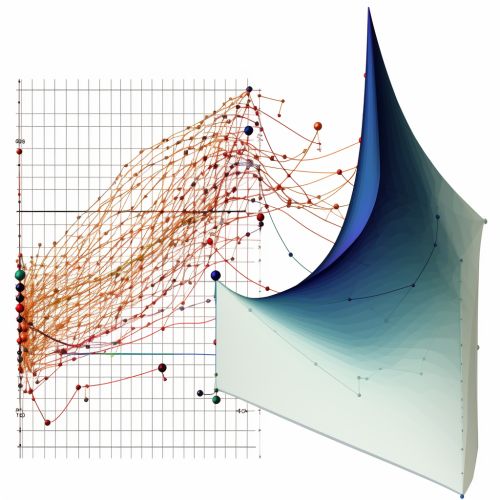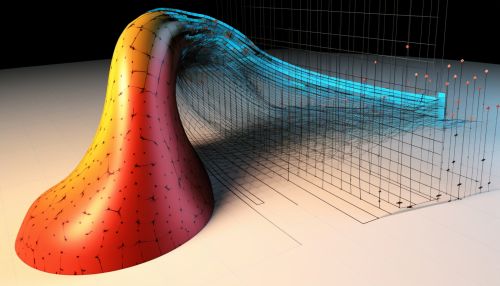Inverse problem
Definition
An Inverse problem refers to a scientific inquiry where the aim is to deduce from observations the causal factors that produced them. In other words, it involves figuring out the parameters of a model to match the data. Inverse problems are commonly encountered in numerous scientific fields such as geophysics, medical imaging, remote sensing, oceanography, and even in the social sciences.
Mathematical Background
Inverse problems are fundamentally a mathematical concept. They are often posed as a set of equations, where the goal is to solve for the unknowns. These problems are typically ill-posed, meaning they do not meet the conditions of Hadamard's well-posed problems: a solution exists, the solution is unique, and the solution's behavior changes continuously with the initial conditions. Inverse problems often lack one or more of these properties, making them challenging to solve.
Types of Inverse Problems
Inverse problems can be categorized into two main types: linear and nonlinear.
Linear Inverse Problems
Linear inverse problems are those where the relationship between the model parameters and the data is linear. In these cases, the problem can be expressed as a matrix equation, and solved using methods such as least squares or singular value decomposition.
Nonlinear Inverse Problems
Nonlinear inverse problems, on the other hand, involve a nonlinear relationship between the model parameters and the data. These are generally more difficult to solve, and often require iterative methods or approximation techniques.
Solving Inverse Problems
Solving inverse problems can be quite challenging due to their ill-posed nature. However, several methods have been developed to tackle these problems.
Regularization
Regularization is a technique used to stabilize the solution of an ill-posed problem. It involves introducing additional information in order to make the problem well-posed. This can be done in various ways, such as by adding a penalty term to the objective function, or by constraining the solution space.
Bayesian Inference
Bayesian inference is another approach to solving inverse problems. It treats the problem as a statistical inference problem, where the goal is to compute the posterior distribution of the model parameters given the data. This approach has the advantage of being able to incorporate prior information about the parameters, and provides a measure of uncertainty about the solution.
Applications
Inverse problems have a wide range of applications in various scientific fields.
Geophysics
In geophysics, inverse problems are used to infer the Earth's interior structure from seismic data. This is crucial for understanding processes such as plate tectonics and earthquake generation.
Medical Imaging
In medical imaging, inverse problems are used to reconstruct images from data collected by devices such as CT scanners or MRI machines. This allows for non-invasive examination of the human body.
Remote Sensing
In remote sensing, inverse problems are used to determine properties of the Earth's surface from satellite or airborne sensor data. This is used in applications such as climate modeling, land use planning, and disaster management.
See Also
- Forward problem
- Ill-posed problem
- Well-posed problem
- Regularization (mathematics)
- Bayesian inference


